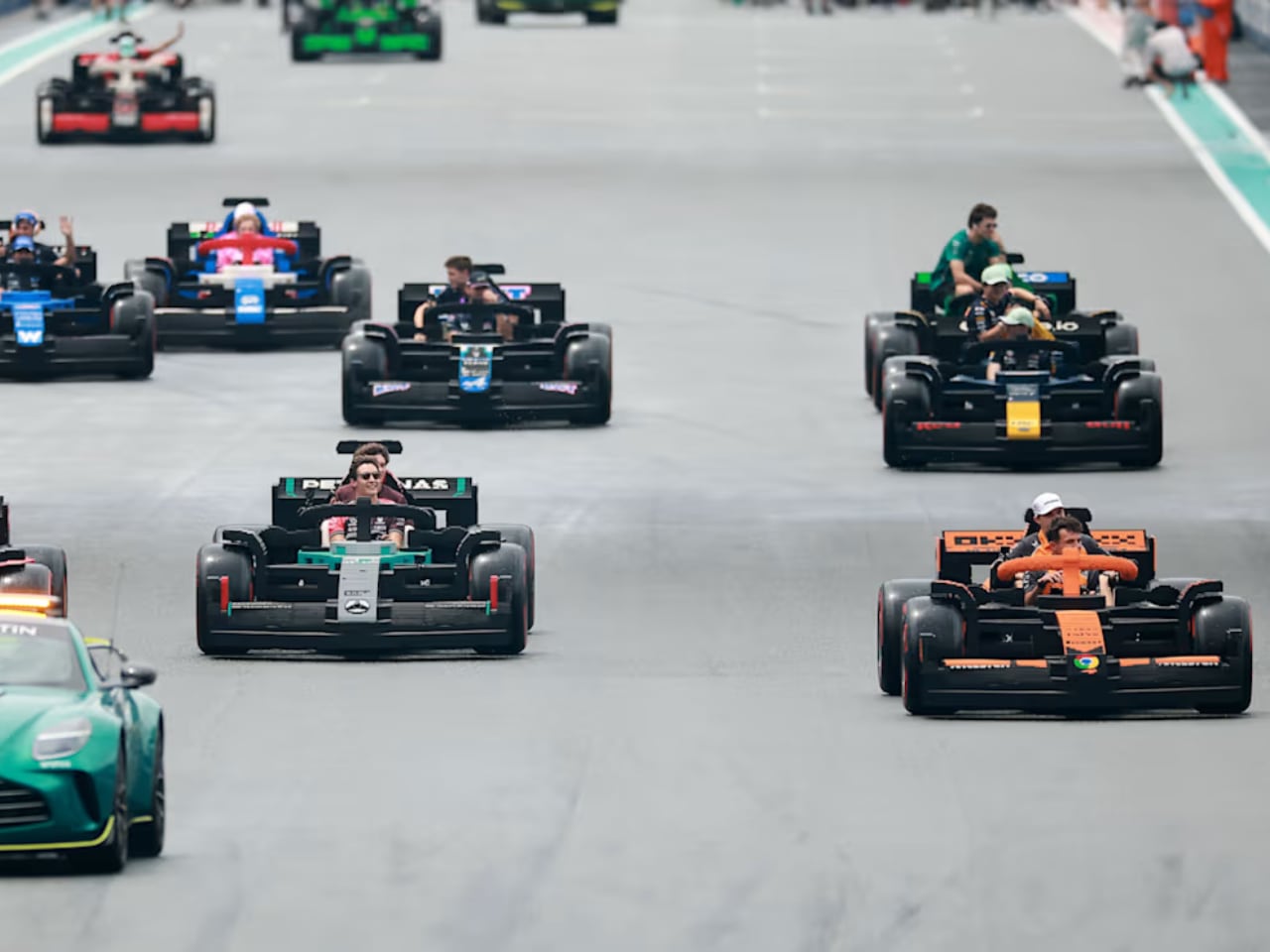The 2025 Miami Grand Prix delivered an unprecedented spectacle as Formula 1 drivers paraded in fully functional, life-sized LEGO replicas of their team cars. This extraordinary feat of design and engineering replaced the traditional truck-based drivers’ parade with something far more memorable – custom LEGO vehicles that captured both the essence of F1 design and the playful spirit of the iconic brick system.
Designer: LEGO
Engineering on an Unprecedented Scale
Each team-specific car required approximately 400,000 LEGO bricks and weighed 1,000kg. A specialized team of 26 professionals invested over 22,000 hours at LEGO’s Kladno factory in the Czech Republic to create these remarkable vehicles. Built around metal chassis frames with electric powertrains, the cars could reach speeds of 20km/h while accommodating two drivers from each team.
Image: F1
What makes these builds exceptional from a design perspective is how they successfully bridge the gap between static models and functional vehicles. The engineering team solved complex structural problems while maintaining each team’s distinctive aesthetic language. Working steering systems constructed entirely from LEGO bricks required novel techniques to ensure the vehicles could withstand actual driving stresses.
Material Tension and Form Language
The inherent blockiness of LEGO bricks creates a fascinating tension against the aerodynamic expectations of Formula 1 cars. Each model confidently embraces this juxtaposition, leaning into pixelation without sacrificing recognizability. Front wings, side pods, and halo structures are rendered in layered brickwork that maintains visual fidelity despite the medium’s limitations.
Image: F1
The McLaren entry features aggressive sculpting across its front wing, using layered black and orange segments to simulate air channels. The Mercedes-AMG Petronas car cleverly uses turquoise bricks to trace branding across side pods and rear wings. Despite their chunky appearance, the builds follow the logical contours of real F1 chassis construction, with plastic bricks mimicking what would normally be carbon fiber components.
Image: F1
Color Strategy and Technical Identity
Color blocking remains faithful to each team’s livery. Ferrari’s classic red with yellow accents extends to pixel-rendered shell logos. Williams offsets navy blue with white and orange accents. At the same time, Red Bull integrates Honda branding through clever brick shading rather than stickers, creating physically textured transitions between blue and red sections.
Image: F1
The technical identity of each team remains intact despite the medium. Haas leans into monochrome with red, white, and black layering, creating visual rhythm along the airbox. Aston Martin’s green car with yellow pinstripes uses strategic brick shaping to accentuate the team’s distinctive front wing philosophy. Each vehicle carries recognizable wheel covers, tire markings, and sponsor elements without becoming visually cluttered.
Image: F1
Design Challenges and Solutions
Recreating F1 cars in LEGO presented significant design hurdles. The complex aerodynamic surfaces with subtle curves don’t naturally align with LEGO’s rectilinear nature. Designers developed creative solutions to mimic organic shapes while maintaining structural integrity.
Color matching required precise replication of team-specific brand colors using LEGO’s limited palette. In many cases, this meant strategic layering of different colored bricks to create the correct visual impression when viewed from a distance.
Weight distribution presented another challenge. Unlike display models, these vehicles needed to support human occupants while maintaining proper balance. Strategic placement of structural components and careful chassis integration ensured predictable handling despite the unconventional construction materials.
Driver Experience and Public Reception
Lewis Hamilton called it “the most fun drivers’ parade we’ve ever had,” while George Russell joked about using the vehicles as “bumper cars” before learning how many hours went into building them. Max Verstappen quipped they would “need to sweep the track” because of “quite a bit of Lego debris” left behind.
Image: F1
The parade evolved into a playful competition as drivers raced each other around the track, demonstrating their competitive nature even in vehicles traveling at relatively slow speeds. Fans responded enthusiastically, with social media buzzing with images and videos of the colorful procession.
Image: F1
Beyond Entertainment: Design Implications
These vehicles represent more than an entertaining spectacle. They demonstrate how a restrictive medium can be transformed to recreate sophisticated forms without sacrificing visual identity. The technical solutions developed for this project could inform approaches to other complex design challenges where standard components must be assembled into functional wholes.
Image: F1
Following their Miami debut, all ten LEGO builds will tour globally throughout the 2025 season, allowing design enthusiasts worldwide to appreciate these remarkable creations up close. In merging serious engineering with playful creativity, these LEGO F1 cars remind us that the most captivating designs often emerge when different worlds collide.
Image: F1
The post LEGO’s Bold Vision: Full-Size F1 Cars Steal the Show at Miami Grand Prix first appeared on Yanko Design.

